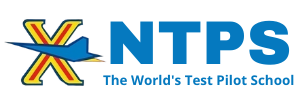T&E 4105 Modern Flight Control Systems
Course Description
This course is offered once per year on-campus. The course is designed to provide a “top-level” introduction to Modern Flight Control Systems (FCS’s). Basic elements of modern FCS’s are reviewed along with typical basic structures and system elements for modern fly-by-wire FCS’s. Classic linear control tools (Root Locus, Bode Plots, Block Diagram Algebra) and their practical application are discussed. Modern software analysis tools are introduced and demonstrated using the associated Control System Toolbox during the course. Handling qualities criteria and special issues related to modern complex FCS’s such as Pilot Induced Oscillations (PIO’s) are reviewed. The need for systematic closed-loop handling qualities evaluations is emphasized. Different control strategies are presented (pre-filters, response feedback, g-command and q-command systems, dynamic inversion, model following). The effects of common control system feedback implementations are presented using software and the NTPS Variable Stability Ground Simulator (VSGS). Command path shaping and the effects of time delay and rate limiting are also discussed. Course learning objectives are reinforced when students go through a hands-on guided demonstration on the VSGS. The objective of the course is to provide a high level of understanding of the Principles, Issues, and Test Methods related to modern FCSs to enable the student to conduct a professional engineering evaluation. Daily review, tutorials and a final written exam are part of the course.
(Desirable Prerequisite: Completion of T&E 4013 & 4104)
Anticipated Course Learning Outcomes
Be familiar with
1. Block diagram representation of a system and block diagram Algebra.
2. Generic structure of flight control systems.
3. The Poles and zeros formalism of a system
4. Application of Pre-filters in modern flight controls systems.
5. Response feedback technique used by modern flight control systems in order to augment stability of an aircraft.
6. Effects of common parameters feedback on aircraft stability.
7. Basic concepts of systems command and dynamic inversion.
8. General design criteria used for modern flight controls.
Understand
1. The relationship between poles location on the S-Plane and dynamic modes of the system.
2. The relationship between transfer functions and frequency response of a system
3. The meaning of Gain and Phase margins and I know how to extract those from the Bode plots.
4. The basic approach in flight testing of a highly augmented aircraft.
Know
1. How to apply the Laplace transformation in solving equations of motion.
2. How to construct Bode plots and how to interpret the frequency response information they retain.
3. How to implement the Root Locus analysis in order to assess the closed loop stability of a system.
4. How to use software to solve for basic stability augmentation problems.
